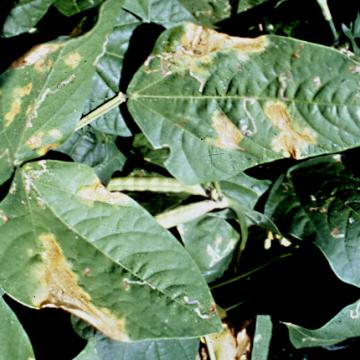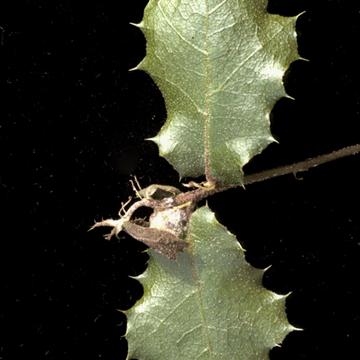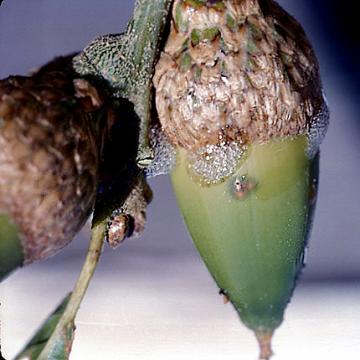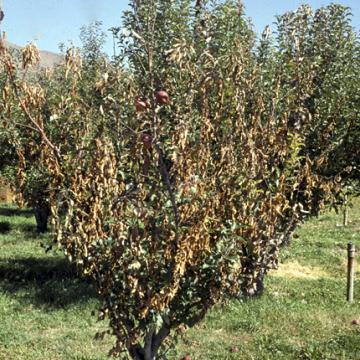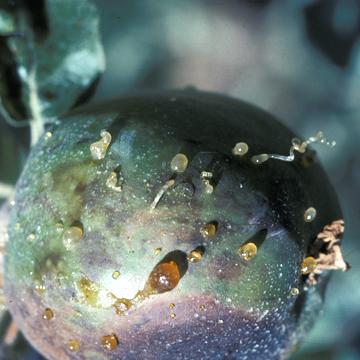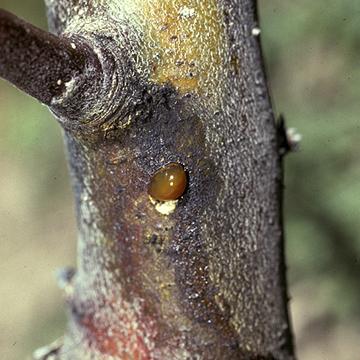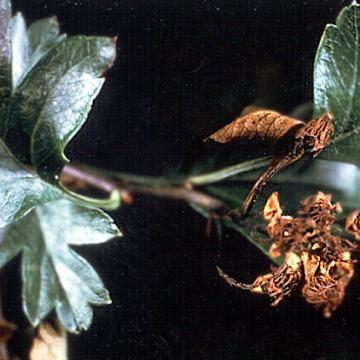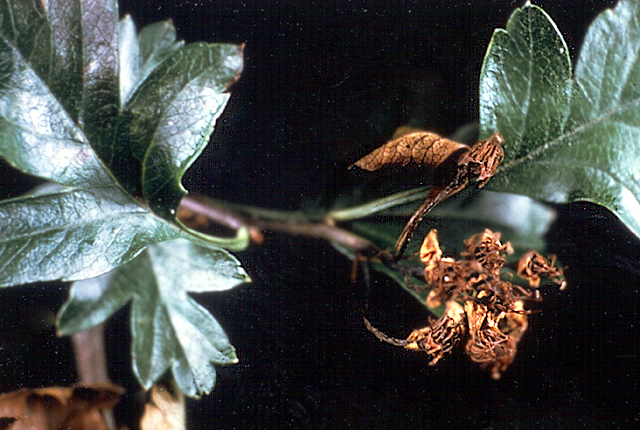DISEASE: Bacterial leaf spot
HOST: Cowpea
Leaf spots vary in size from small to large and some fall out in time, leaving a shot-hole appearance.
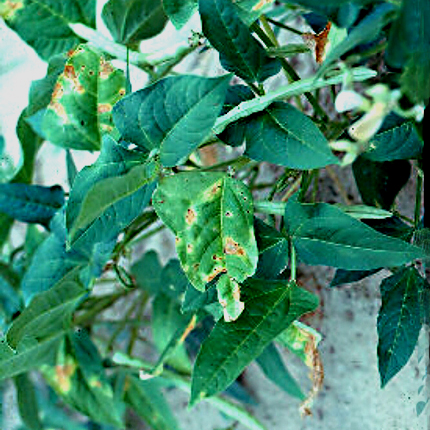
Bacterial leaf spot | Cowpea
DISEASE: Bacterial leaf spot
HOST: Cowpea (Vigna unguiculata)
PATHOGEN: Xanthomonas axonopodis pv. vignicola
PATHOGEN SYNONYM: Xanthomonas campestris pv. vignicola
SOURCE: R. Gitaitis
DISEASE: Bacterial leaf spot
HOST: Cowpea
Leaves with large, light brown necrotic areas.
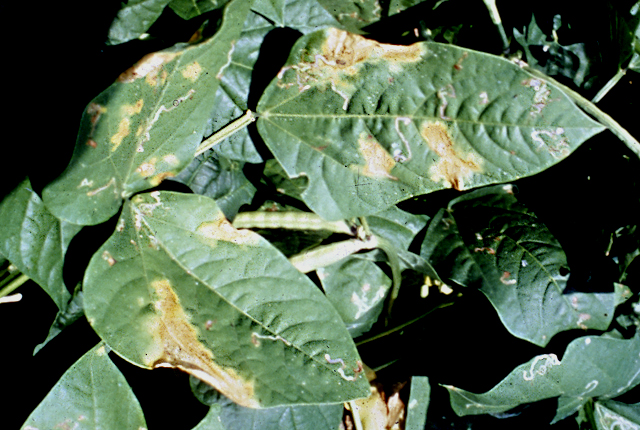
Bacterial leaf spot | Cowpea
DISEASE: Bacterial leaf spot
HOST: Cowpea (Vigna unguiculata)
PATHOGEN: Xanthomonas axonopodis pv. vignicola
PATHOGEN SYNONYM: Xanthomonas campestris pv. vignicola
SOURCE: R. Gitaitis
DISEASE: Drippy nut disease
HOST: Oak
Ooze from young twig inoculated with Brenneria quercina.
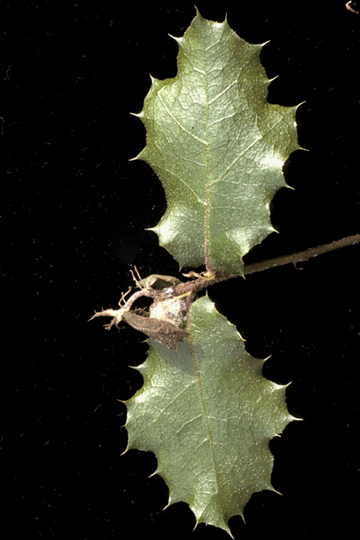
Drippy nut disease | Oak
DISEASE: Drippy nut disease
HOST: Oak (Quercus agrifolia)
PATHOGEN: Brenneria quercina
PATHOGEN SYNONYM: Erwinia quercina
SOURCE: M. Schroth
DISEASE: Drippy nut disease
HOST: Oak
Ooze from infected acorn. Copious ooze drips from infected acorns, leaving sticky spots on objects under tree canopy. Infections are associated with insect oviposit wounds.
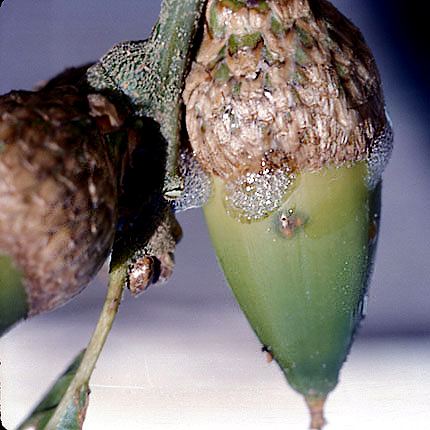
Drippy nut disease | Oak
DISEASE: Drippy nut disease
HOST: Oak (Quercus agrifolia)
PATHOGEN: Brenneria quercina
PATHOGEN SYNONYM: Erwinia quercina
SOURCE: M. Schroth
DISEASE: Fire blight
HOST: Apple
Severe infection of apple with dying twigs and branches.

Fire blight | Apple
DISEASE: Fire blight
HOST: Apple (Malus domestica)
PATHOGEN: Erwinia amylovora
SOURCE: S. Thomson
DISEASE: Fire blight
HOST: Apple
Diseased apple with copious ooze.
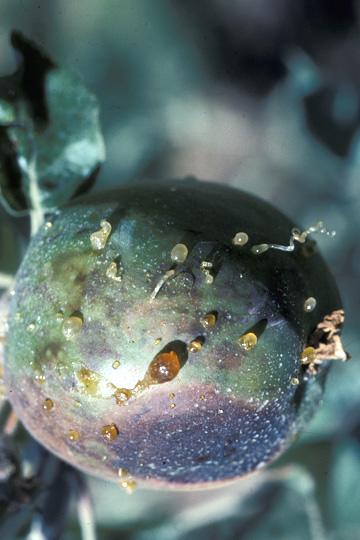
Fire blight | Apple
DISEASE: Fire blight
HOST: Apple (Malus domestica 'Jonathan')
PATHOGEN: Erwinia amylovora
SOURCE: S. Mohan
DISEASE: Fire blight
HOST: Apple
Canker on trunk oozing fire blight bacteria.
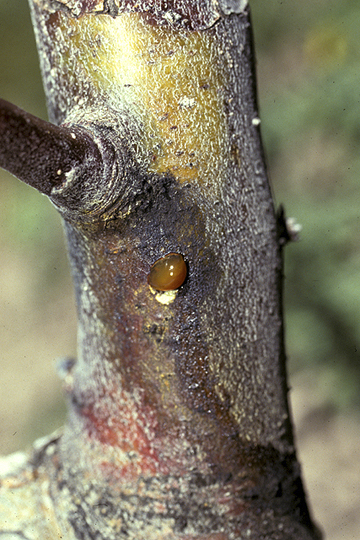
Fire blight | Apple
DISEASE: Fire blight
HOST: Apple (Malus domestica)
PATHOGEN: Erwinia amylovora
SOURCE: S. Thomson
DISEASE: Fire blight
HOST: Crabapple
Blighted shoot tip.
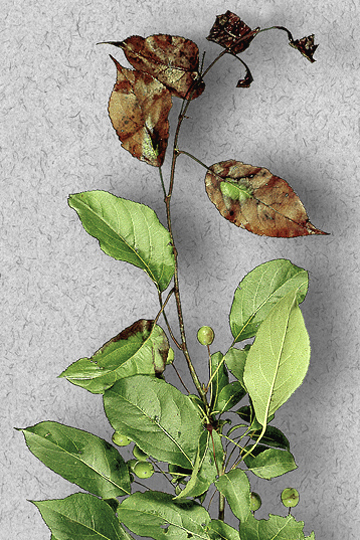
Fire blight | Crabapple
DISEASE: Fire blight
HOST: Crabapple (Malus sylvestris)
PATHOGEN: Erwinia amylovora
SOURCE: W. Sinclair



